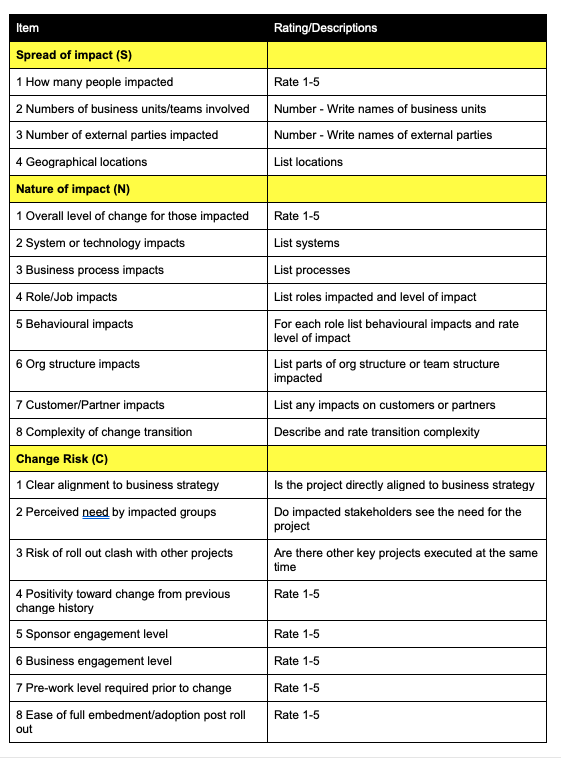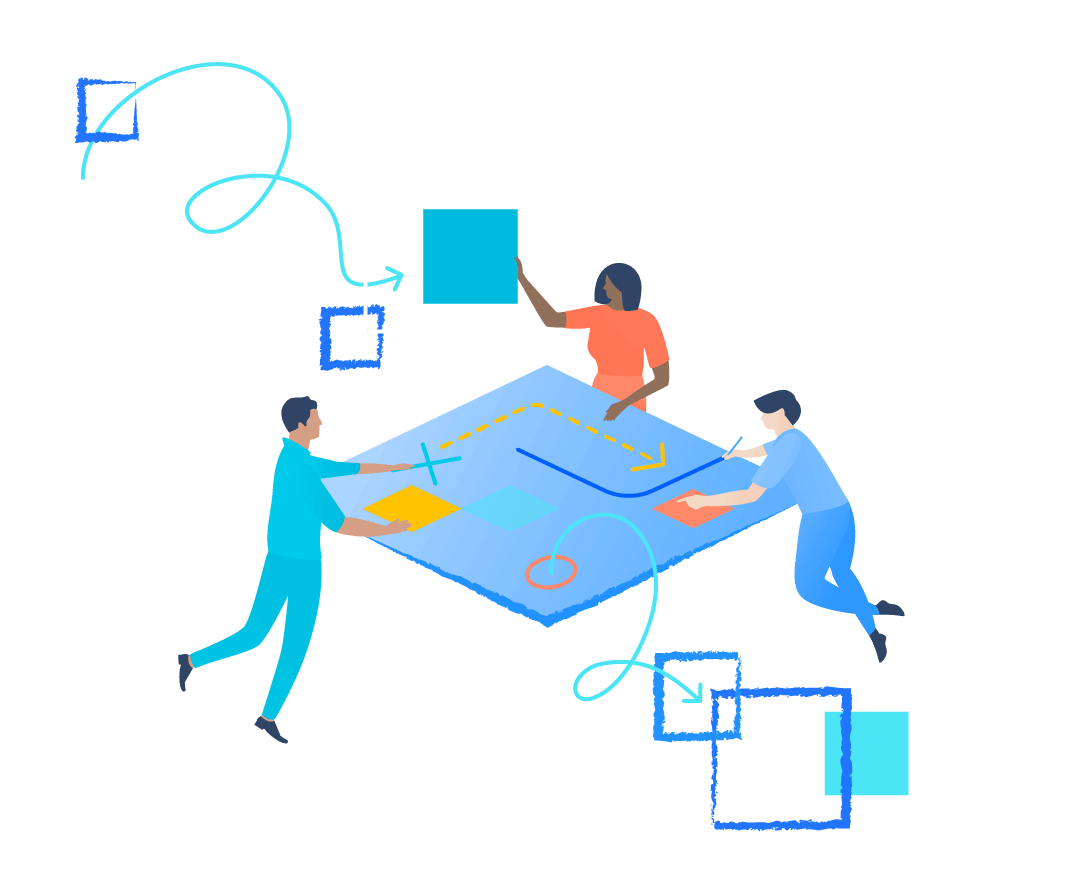Change Scoping Session
Scope out the complexity of initiative change to better
understand the effort involved in supporting the change.
45 min
2+ People

What you’ll need
REMOTE
Video conferencing with screen sharing
Digital collaboration tool (Zoom, Hangout)
IN-PERSON
Whiteboard
Markers
Post-it notes
Timer
Instructions for running this Playbook
1. Background
Change Scoping Session is typically conducted at the commencement of the project. This happens after the business case has been approved, and initial project resources have been committed. The reason for this session is to better understand and therefore scope out or ‘T shirt size’ the complexity of the change and therefore the effort and resources required to support it.
By better understanding the effort required to support the initiative, you’re able to have more time to plan for get ready, whether it be learning resources, analyst resources, or stakeholder support required.
2. Prep
It is critical to select the right time to conduct this session. If the session is conducted too early you may not have sufficient information to scope out the project. On the other hand, if you conduct the session too late, the wheels may have already been set in motion and certain approaches may have already been decided on. If you are too late to intervene in the approach that the project has already taken in managing change, extra effort may be needed to ‘reverse’ or tweak the approach.
The following elements should be finalised prior to organising the session:
- A business case has been finalised and the project has been approved by senior stakeholders (this may involve funding approval)
- A project manager has been assigned
- A business owner has been assigned
- A business analyst may have been assigned (depending on the project)
- Some level of project background and objectives have been discussed amongst business stakeholders
Scheduling:
Schedule the meeting when there is sufficient understanding of the background and objectives of the project. Clarify this with your project manager or business analyst as required.
Who:
Include key project team members such as the project manager, business owner, business analyst and key business representative.
Organisation:
Prior to the session undertake the following preparation:
- Read through the scoping assessment document
TIP: SESSION DESIGN
The rationale of the scoping content covers the spread of the impact across the organisation, the nature and type of impact and key change risks. From these 3 key areas you should be able to assess the overall complexity of the change initiative.
Change Scoping template

3. Run the session
Intro – 5 min
Walk through the purpose of the session and why this is required. Emphasise how important it is to effectively scope out or ‘T shirt size’ the anticipated impacts and complexity of the project in order to understand the level of support and resources required.
- Overview the scoping template and components – 5 min
- Review each section of the scoping template and go through the logic and rationale of the document so that those in the session understand how the scoping document works
- Go through each section of the scoping template and fill it in – 30 min
- Go through item by item each part of the scoping document and explain what each item means
- Use examples as required to prompt responses from the group
- As a change practitioner you will need to balance your role as a facilitator as well as a key contributor to the content of the document
- Fill in the document as you go along so that others can see the agreed content being entered
- At the end, review the completed template in summary
4. Conclusion and next steps
Next steps – 5 min
At the end of the session, after reviewing the filled-in content and ratings, call out the level of overall complexity and agree this with the group.
What to do with the output?
The level of ‘complexity’ or ‘T shirt size’ you agreed with, either ‘high’, ‘medium’, or ‘low’ provides guidance on the level of support and resources required for this project. Depending on the level chosen, refer to other projects with similar complexity and use this as a reference in terms of support required.
Use this to plan for the change resources required and communicate this with your stakeholders. However, keep in mind that as the project enters into the next phase and details become clearer, the assumptions may change. So, keep a close hand on how the project is evolving and adjust plans as needed.
TIP: WHAT TO AVOID
The session happens at the commencement of the project when there are a lot of unknowns. As a result, keep the conversation at a high level using broad assumptions. Even list out assumptions as needed to make these clear as a part of the assessment.
Avoid getting bogged down into detailed discussions since these may change.
Explore other Plays



